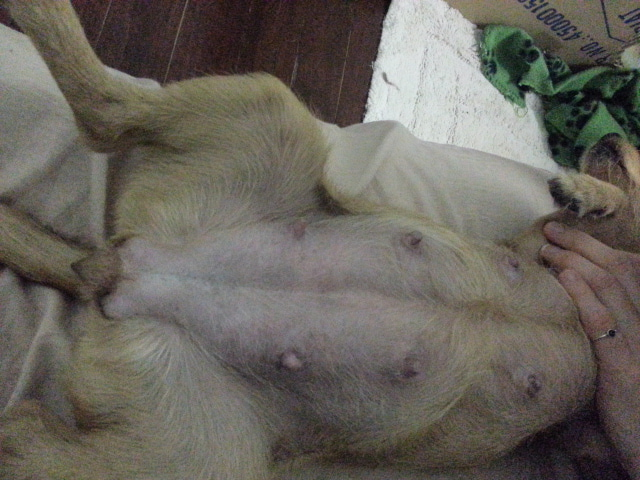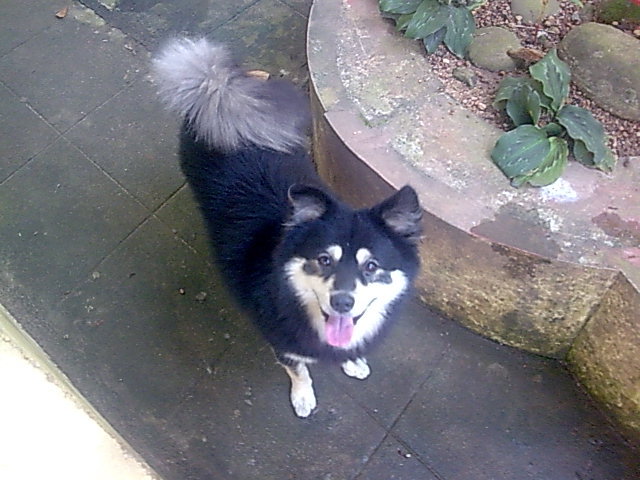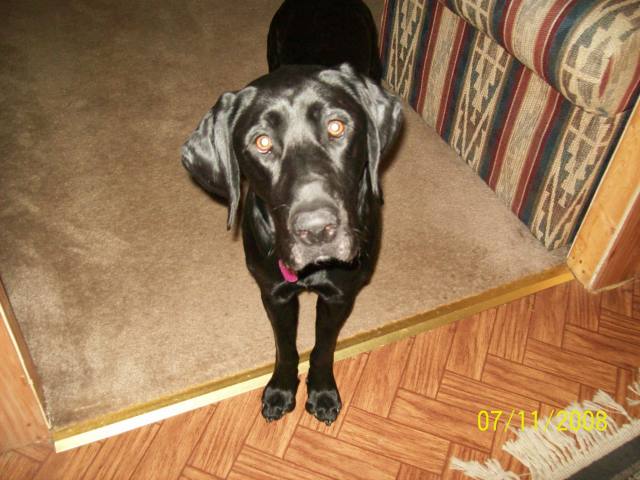QuestionI rescued a Chihuahua that we believe was beaten by the husband of the his previous family. He has bit my husband and will not be around him. He is acting in a fight or flight and not a need for dominance. What can we do to help him accept my gentle hearted husband so he can heal?
AnswerHi Sally,
With plenty and time, and lots of patience for you and your husbands, your Chihuahua can learn to accept your husband.
Daily training sessions where your husband would crouch down or sit on the floor, maintaining a nonthreatening sideways stance, with his eyes averted from the dog. Your husband should have some small tasty high-value treats, which may mean something really strong like liver cookies available at pet supply stores or bits of hot dog. Have your husband extend a hand in the direction of the dog and drop a treat. Eventually the dog will sniff around and slowly approach. Most likely, the dog will take the treat and retreat a bit to eat it. Your husband should leave his hand extended, but not reach at the dog. After a day or so of your dog accepting the treat, have your husband keep the treat in his extended hand.
Since it's you that the dog is getting along with, your role is to play along during these exercises. Project a happy, relaxed body posture and tone of voice. Make it clear that you welcome your husband presence. However, avoid too much chatter with your husband, and avoid distracting your dog. Ignore your dog if he tries to cling to you or beg for attention. Also make sure not to comfort the dog, verbally or physically, at times when the dog displays timidity or fear, since you do not want to reinforce these undesirable behaviors. You want your dog to get the clue that during these practice sessions, your husband is the only source for treats and positive interaction.
Eventually, the dog will show signs of budding confidence. Ideally, the dog will touch your husband hand upon taking the treat. Your husband can softly say, "Good dog". When the dog seems somewhat secure, your husband can gently stroke the dog under the chin or on the neck or chest (be aware that shy and fearful dogs are often frightened when people attempt to touch their face or head). Eventually make eye contact. However, progress slowly to avoid the setback of a fear response. If there are any setbacks, start again at offering of tidbits without eye contact.
It might take a few of these set-up encounters for the dog to feel comfortable enough to approach at all. So be patient. The results will be worth it.
Your husband should prepare and set down the dog's meals, and also take him for as many walks as possible each day. The objective is to have the dog realize that good things happen with this person, that he must depend on this person for interaction, and that this formerly scary being can be trusted and will not hurt him.
With this counter-conditioning, the dog learns to associate POSITIVE experiences with men (well at least this one man).
If the dog barks or snarls at your husband (while you're holding the dog), immediately set the dog down on the floor, and tell him "No!", or "Quiet!". Holding the dog during outbursts is the same as comforting him, and reassuring bad behavior. Reprimands should come from you, not your husband.
During the weeks you are working on counter-conditioning, limit your interaction with the dog. You can be present when your husband is feeding the dog or attempting to engage the dog in play, thus providing somewhat of a security blanket. But you must avoid interacting with dog, so that the dog realizes he is dependent on the "other" person for good things such as food, treats, fun and exercise.
When your dog clings to you, ignore him. He will realize that if he wants to eat or play, he must interact with the "other" person. You may find it hard to withhold attention and affection. However, by doing so, your dog will learn to seek attention, affection, food, treats and play from your husband, and eventually build a bond with him.
Remember to praise and give rewards (which can be yummy treats or a very favorite toy) for even the tiniest signs of progress. Small signs can be anything from a tentative approach to ceasing to duck behind the couch when your husband enters the room.
Be patient, and avoid pushing the dog along too quickly. It takes time, but this approach nearly always works, and your dog will learn how to interact with all family members in a positive way.
Best of luck,
Patti

 Temperature before birth
QuestionQUESTION: My female cheweenie is on day 52 of h
Temperature before birth
QuestionQUESTION: My female cheweenie is on day 52 of h
 high temp tummy
Question
swollen nipples?
My two year old Jack R
high temp tummy
Question
swollen nipples?
My two year old Jack R
 pooping and peeing
Question
snoopy
hi, my name is praveen n i have a dog t
pooping and peeing
Question
snoopy
hi, my name is praveen n i have a dog t
 My 2 yr old blacks eating habits.
Question
Pic of Tula
I have a 2yr old black lab. Her an
My 2 yr old blacks eating habits.
Question
Pic of Tula
I have a 2yr old black lab. Her an
 Puppy wont come
Question
Capone & Rascal
Help! My seven week
Puppy wont come
Question
Capone & Rascal
Help! My seven week